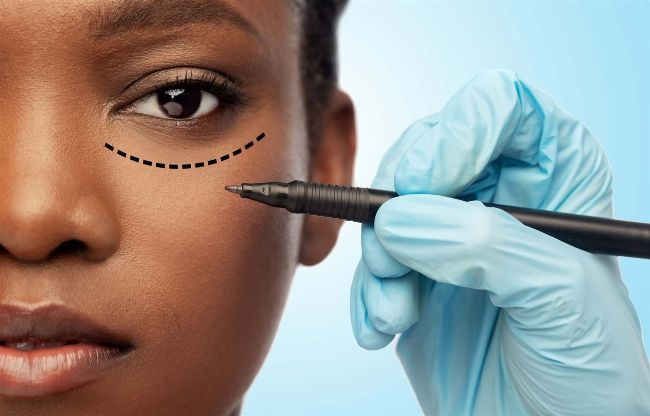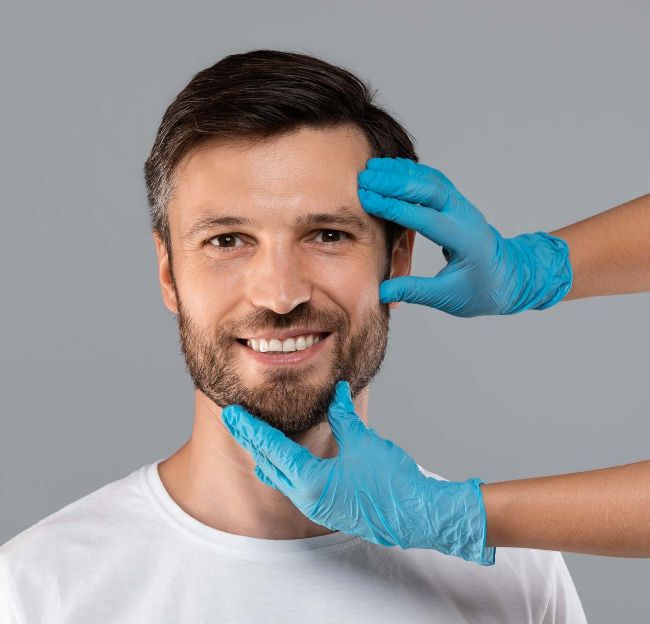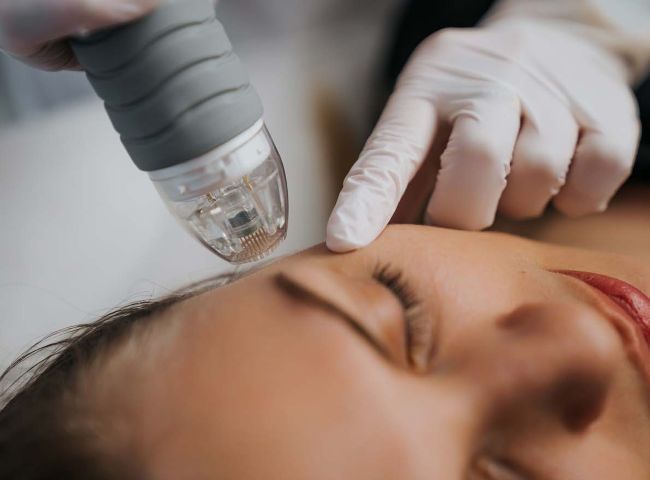THE aesthetic trends YOU NEED TO KNOW ABOUT
Treatments that boost collagen and a focus on holistic wellness are among the trends shaping the aesthetics industry, according to the New Next by Galderma industry report.

Ground Picture_Shutterstock
Pharmaceutical company Galderma and trend forecaster WGSN have launched the Next by Galderma industry report on the global aesthetic trends which they believe will shape the future.
The report was compiled using data and insights from a global network of aesthetic practitioners and industry influencers.
Galderma revealed the report at an exclusive launch event in Paris which happened alongside the IMCAS World Congress on February 2.
The launch also featured a Q&A hosted by journalist and author Alice Hart-Davis.
According to the report, the aesthetics market is predicted to be valued at $25.9bn in 2028, further demonstrating how essential aesthetics are becoming to holistic beauty and skincare routines.
The report outlined three core macro-movements which support this aesthetics and beauty industry growth, from which it identified six trends which are driving aesthetics forward.
What’s happening in the aesthetics industry?
Increasing accessibility
• More convenient – the rise of less invasive treatments shows the desire for convenience, minimal downtime and faster results.
• More affordable – the availability of more affordable pricing options means that more people can now access treatments.
• More inclusive – more consumers are seeing aesthetics as being something for everyone, instead of just for women.
Advancements in science and technology
The growth in aesthetic technology has not only expanded the variety of treatment options available, but also their appeal.
For example, there are augmented reality and face editing apps can be used by aesthetic doctors as part of the consultation process.
55% of adults would be interested in an app or website that allows them to see how aesthetic procedures affect their faces in a medically accurate way, according to a 2020 survey compiled by artificial intelligence aesthetics app Aedit.
There have also been advancements in product development and formulation, presenting practitioners with more options to address patients’ wants.
Social community
Social media has increased awareness and understanding of aesthetic and cosmetic treatments, helping to normalise and popularise them.
Aesthetic practitioners are using social media to build followings and widen their patient base.
For example, Californian facial plastic surgeon Dr Kay Durairaj has 400k TikTok followers and says that 80% of her clients come from social media.
Top trends in aesthetics
1. Proactive beauty
“Prejuvenation” treatments, which focus on prevention rather than correction, are becoming increasingly popular.
The report identified four ways in which people are getting ahead of ageing:
• At-home prevention by embracing home-use devices and investing in cosmeceutical skincare and beauty products. These at-home solutions can work alongside in-clinic aesthetic treatments as add-ons.
• Smaller, less invasive “tweakments”, such as dermal fillers and skin boosters, which are in demand across all age demographics as a way to tackle moderate signs of ageing.
• Products and treatments which aim to increase collagen production. It looks likely that collagen biostimulators will increasingly be used alongside other injectables, as well as “collagen banking” plans to maintain and boost collagen earlier on.
• Tomorrow’s consumer will enter the aesthetics market after a generation who already see the value in aesthetics. All of this means that, looking forward, effective ways to stimulate collagen and elastin production are likely to emerge, as will more solutions to restore other aspects we lose with age, such as bone loss and hair thinning.
The report suggested that multi-modal treatment plans will combine several aesthetic treatments with skincare, nutrition, long-term health and wellness in order to prolong youthful appearances.
2. Mindful aesthetics
‘Less is more’ has been trending in beauty and fashion for a while, with ‘clean girl’ and ‘quiet luxury’ minimalism among the top terms.
The demand for sustainability is also still high, with consumers seeking products with minimal environmental impact – the global organic beauty and wellbeing market reached £138m in 2022.
This is now translating to aesthetics, with consumers becoming more aware how what they put in their bodies is affecting them, and demanding transparency and accountability.
The report claimed this mindfulness is evidenced in three ways:
• The ‘no make-up’ look – patients are looking to aesthetics for a healthy and radiant appearance, seeking treatments which improve skin quality. There’s also been a shift away from obvious-looking results towards a more natural look.
• Naturally in sync – artificial products and treatments are out as consumers look to naturally-occuring ingredients like hyaluronic acid and treatments like platelet-rich plasma facials. Biostimulators are also seeing increased search volumes.
• Free from – there are more plant-based ingredients in treatments as consumers seek to align their beauty choices with their ethical beliefs.

Prostock-studio_Shutterstock
The report said, “Expect to see a deepening of mindful tendencies, such as further developments in tissue engineering science as an alternative to silicone implants, products that trigger natural processes and the continued demand for ‘great skin, no make-up.”
3. Fast aesthetics
While the fast rise and fall of trends in common in the fashion world, it’s a recent development in aesthetics.
Many trends are instigated by celebrities, but their growth is enabled by social media.
Examples of treatments which have quickly increased and decreased in popularity include:
• Buccal fat removal – this procedure removes fat from the cheeks to exaggerate the appearance of cheekbones. It was popularised by celebrities and proliferated by social media, with Google searches for “buccal fat removal” peaking at the end of December 2022 before dropping by 87% in July 2022. In fact, buccal fat removal reversal has become a topic of conversation.
• Brazilian butt lift (BBL) – aesthetic BBL surgeries increased by 90% from 2015-2019 but fell by 27% in 2022, according to Business Insider. The report claims that there is now a preference for subtle lifts and enhancements achieved with less invasive treatments.
• Fox eyes – this procedure lifts and extends eyebrows to create an enlarged look. While very popular last year, it now seems to be going out of fashion.
• Russian lips – this procedure raises the height of the lip shape with a pronounced cupid’s bow. Google searches for this peaked in February 2022 but has since declined, especially as many practitioners have begun to lean away from this in favour of subtler looks.
The report said, “Aesthetics intersecting with immediacy isn’t going away; for consumers its about satisfying novelty but for practitioners, it’s more complicated.
“It’s about how to know if a look is ‘fast’ or here to stay – and how to safely react to the mindset of ‘disposable looks’.
“In the future, we may see treatments designed for temporary life states (i.e. a wedding or vacation) as well as a continuation of treatments that can be safely reversed.
“Practitioners highlight a responsibility to bust myths around how easily treatments can be reversed while ensuring that patients are fully informed about the trends they are asking for; spending more time in consultation and considering a stepwise approach to treatment will become key.”
4. Beauty fandom
This trend takes its inspiration from niche idolisation – from cultural icons to digital filters, anime and beyond.
It reflects how the world of aesthetics responds to fascination with mimicry which is fueled by digital communities which explore unique beauty ideals.
How practitioners respond to this consumer trend is controversial, bringing in questions of ethics and what the limits are.
The report identified three tendencies which are developing this trend:
• Core fandoms come to life – social media has been fuelling niche trends like “Barbiecore” and “fairycore”, and aesthetics is being used as a tool alongside fashion and make-up to create these looks; think “Barbie Botox” and “fairy ear surgery”.
• Celebrity fetishisation in motion – consumers’ fixation with celebrity culture is driving desires to emulate their appearance, whether it’s through surgery or less invasive treatments.
• Digital filters in the real world – some consumers are looking for more permanent ways to achieve the proportions and features of filters and avatars.
The report said, “We expect to see an increase in demand for flawless skin inspired by the famous doll. We’ll likely see a less extreme take on fandom emerge for most consumers, who will lean towards celebrity looks.
“A select few may embrace future technological advancements in prosthetics and implants to achieve total transformations to look like certain characters or virtual AI avatars.
“AI may also be deployed to help educate the consumers requesting more extreme looks and help optimise their treatments.”

Rovsky_Shutterstock
5. Expressionality
Beauty standards are becoming a thing of the past; empowerment and being yourself is now key.
The four ways in which exploration of identity is influencing demand:
• Male demand – more male clients are seeking treatments to masculinise their look, but this isn’t limited to traditional markers of masculinity.
• Female empowerment – experimentation with gendered features continues as more western women seek sharper (typically more masculine) facial features such as straighter jawlines.
• Personalisation – treatments are becoming increasingly tailored; for example, lip aesthetics have evolved beyond boosting volume.
• Cultural identity – many Asian and Middle Eastern consumers prefer cosmetic procedures that enhance (rather than mask) their cultural identity, according to the report. Rhinoplasty reversals and “ethnic rhinoplasties” are becoming more talked about.
The report said, “Tomorrow, it will all be about who you feel you are and how you identify, regardless of how near or far that is to your current appearance.
“Personality, culture and gender are all open to being redefined with aesthetic treatments.
“The need to go beyond a ‘one-size-fits-all” approach will grow, with consultations that consider all patients’ desired outcomes, even if they differ from typical beauty standards.
“Face-shaping and nose remodelling will be two areas in which we will see a more individualised approach.
“We will also see a wider selection of body-treatment options for patients who have varying body goals.”
6. Cancelling age
With developments in technology and medicine, consumers are expecting longer healthier lives.
Language is moving away from reversal-focused “antiageing” towards preservation-focused terminology like pro-ageing.
As a result, consumers are cancelling expectations of what certain should look like.
Next by Galderma indicated three ways this is happening:
• The new 50+ preservation – the frozen face look has become considerably less desirable compared to subtler alternatives, such as more under-the-radar biostimulating procedures.
• Beyond the face – there’s growing interest in preserving other areas that reveal age, including the decolletage, hands, knees and underarms.
• A holistic approach – more patients are seeking a combination of procedures for longer-lasting results.
The report said, “As they age, patients will continue to express their desired look with treatments and technologies.
“This will include products and procedures that address the impact of hormone levels during menopause and mature pregnancies.
“We will also see a more holistic, inside-out approach to ageing, providing patients with guidance on the best combination of treatments, supplements and lifestyle choices that can revitalise how they look and feel.”
Article first appeared in the UK edition of PROFESSIONAL beauty magazine on 22 February 2024.